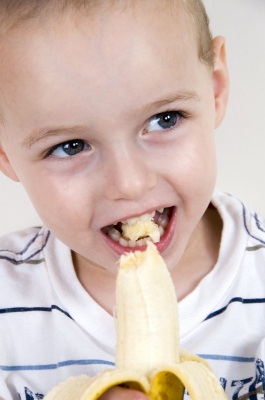Build good eating habits in your 2- to 5-year-old
The who, what, when, where, why and how of mealtimes.
Feeding a child is not easy job. Keeping the who, what, when, where, why and how of mealtimes in mind, you can simplify feeding your 2- to 5-year-old. Michigan State University Extension encourages making mealtime positive for you and your child.
who, what, when, where, why and how of mealtimes in mind, you can simplify feeding your 2- to 5-year-old. Michigan State University Extension encourages making mealtime positive for you and your child.
Who? Mealtime responsibilities can be shared. It is your job to decide the time food is offered and where a child will eat. A child can help decide what food will be served, if they will or will not eat and how much they will eat. This can be difficult for those who grew up with the “clean your plate” rule. Children appreciate the having control, just as adults do, and what a child eats is a good area to relinquish some control to the child.
What? Offering foods from the five food groups is a good place to begin. Choosemyplate.gov meal plans include foods from the following food groups: Grains, vegetables, fruits, dairy and protein. A snack would consist of items from at least two food groups, while a meal should have food from three or more food groups.
Drinks are also an important part of mealtime. The American Academy of Pediatrics recommends limiting juice, including 100 percent juice, to four to six ounces per day. Milk is a good choice to serve with meals. Beverages such as juice and milk should be available only at meal or snack time. Offer water between meals to children who are thirsty.
When? Toddlers and preschoolers do well on a schedule. Meals and snacks should be provided every two to three hours. Allowing a child to eat only at designated meal times will help the meal preparer and it will help the child to eat better.
Where? Meals and snacks are best served at a table. Limit other distractions, such as TV during mealtimes. Discuss what has already happened during the day or what the plans are for the rest of the day.
Why? Snacks and meals are a time for children to learn how to make conversation. As a caregiver or parent, it’s important to be engaged with the children you care for. Plan to take time to sit down and interact with the children in your life. This is a time to find out what’s on their minds.
How? Children need to learn to behave at the table, and it’s better to start out young. As with all rules and discipline, consistency is important. Serve a meal with a least one food that your child likes in order to avoid being a short-order cook.
Be a good role model, eat with your child and have family meals as often as possible.



 Print
Print Email
Email


